Use your dehydrator (or oven) to make your own chili flakes at home. They’re perfect for dashing over pizza or any other food for a bit of zing and flavor. A great way to preserve your pepper harvest.
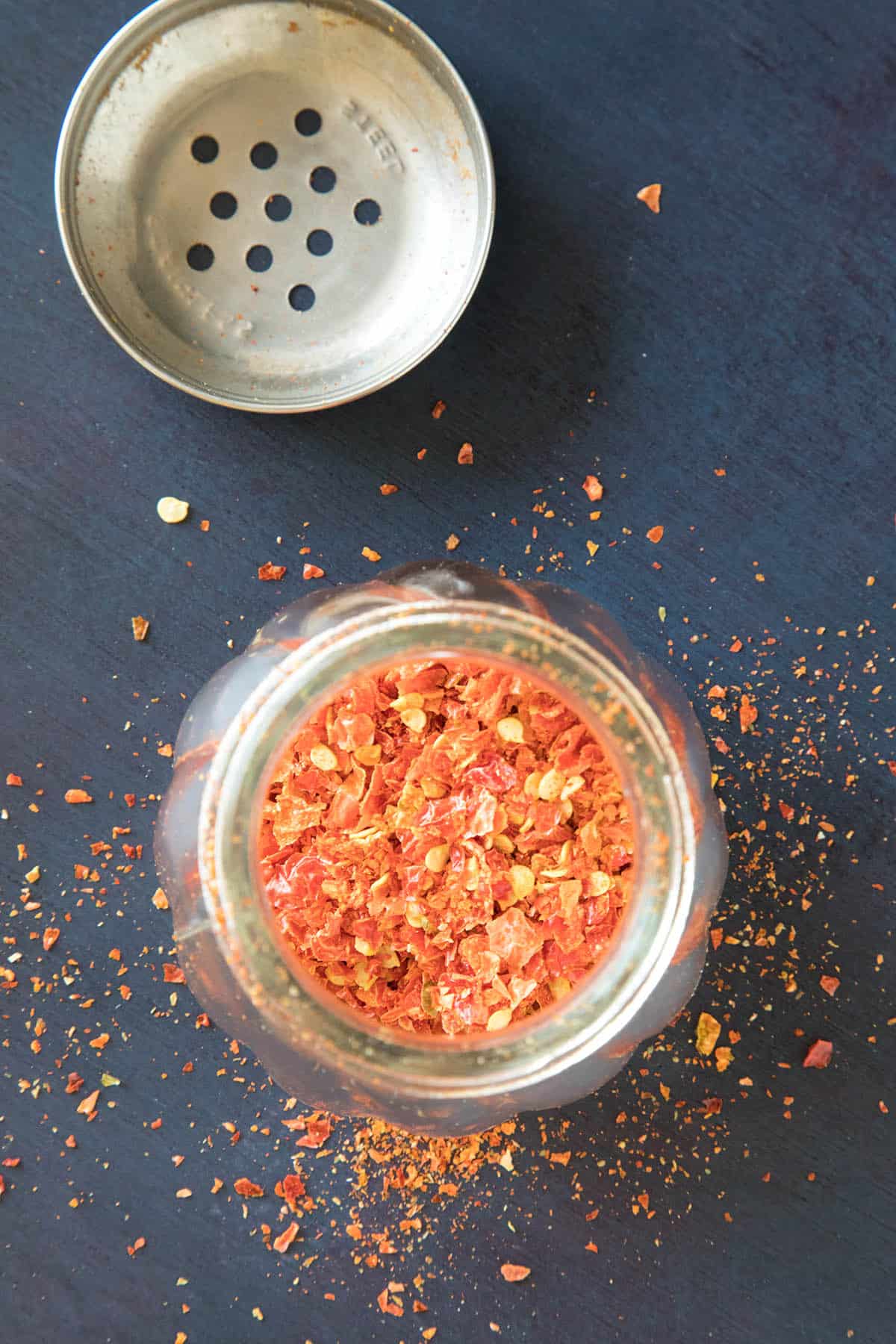
How to Make Homemade Chili Flakes
If your garden is exploding with chili peppers, a great way to preserve them is to make your own Homemade Chili Flakes. It's surprisingly easy, and yields the freshest, most vibrant chili flakes you'll ever have.
All you need, aside from your fresh chili peppers, is either a dehydrator or an oven. I prefer my dehydrator, as it is the most foolproof method.
I usually pick many, many pounds of peppers from the garden each year and preserve as much of them as I can. See my Preserving Chili Peppers section for other methods, though homemade chili flakes are one of my favorites.
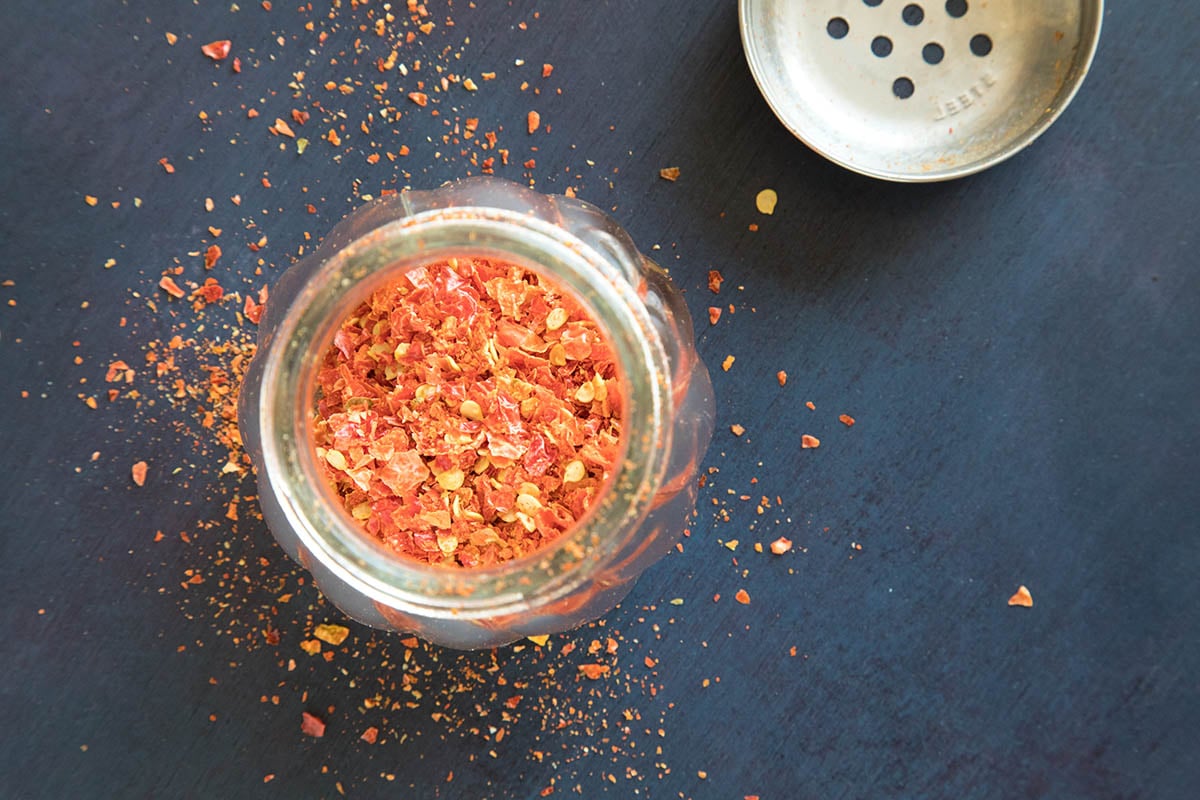
Why I Love Chili Flakes
Chili flakes are great to have around. They're a super seasoning. You can sprinkle them over anything you'd like for a nice pop of heat and flavor. And, the great thing about making them at home is, you can make any type you'd like.
When you purchase them from the store, you're basically limited to the singular crushed red pepper flakes usually made from cayenne peppers, the same stuff you get at every pizza place across America.
I've never understood why there isn't more crushed pepper variety. Don't get me wrong. I love the stuff served with my pizza, but as a chili pepper aficionado, I like a bit of variety. Don't you?
So let's make our own!
I HIGHLY recommend using a dehydrator for this, my friends. You CAN use your oven to dry your peppers, but the process is so much smoother and easier with a dehydrator. And yes, that is basically all we have to do is dry some of our favorite peppers.
So let's get drying.
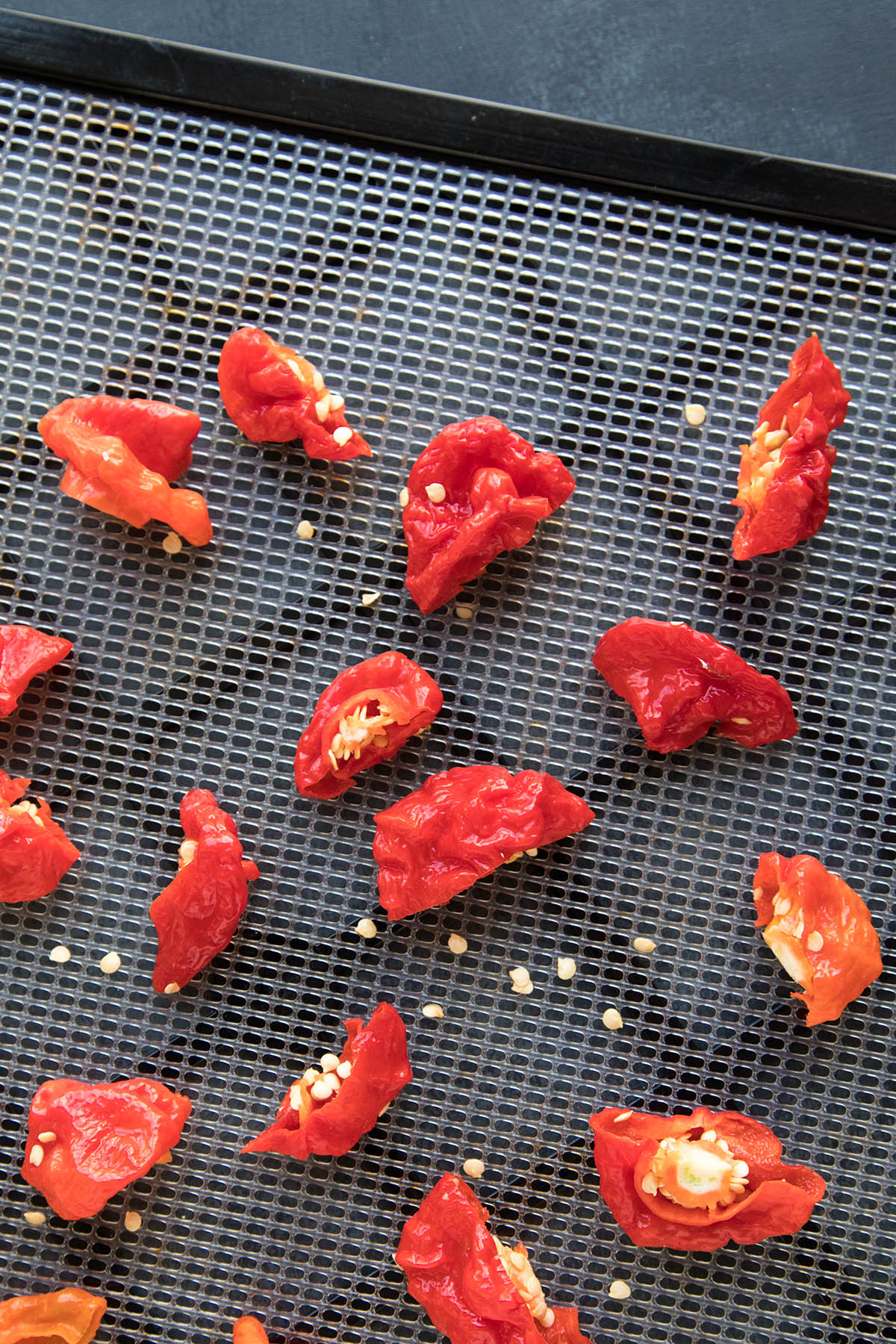
How to Make Homemade Chili Flakes - the Recipe Method
First, wash and dry your preferred chili peppers. I used Squash Red peppers that I grew this year, as they have a nice medium level of heat, but this will work with ANY mild or hot peppers.
I often make crushed scorpion peppers for a crazy heat blast. You can even make them with bell peppers for a no-heat version.
Next, slice each pepper in half lengthwise for smaller peppers, or into rings for thicker walled peppers. It is best to cut them into 1/4" or smaller pieces for ease and uniformity of drying.
Set them into your dehydrator tray and dehydrate at 130 degrees F for 12 hours, or overnight. You may need to dehydrate longer, depending on the air conditions.
If oven drying, you need to keep the heat at the lowest setting possible. Most ovens won't go as low as 130 degrees.
If not, spread the peppers out on baking sheets and crack the oven door so keep the temps down and some air flow moving. Air flow is important to dry the peppers evenly.
Learn more about How to Dry Chili Peppers, and also How to Dry Chili Peppers to Make Your Own Seasoning Blends.
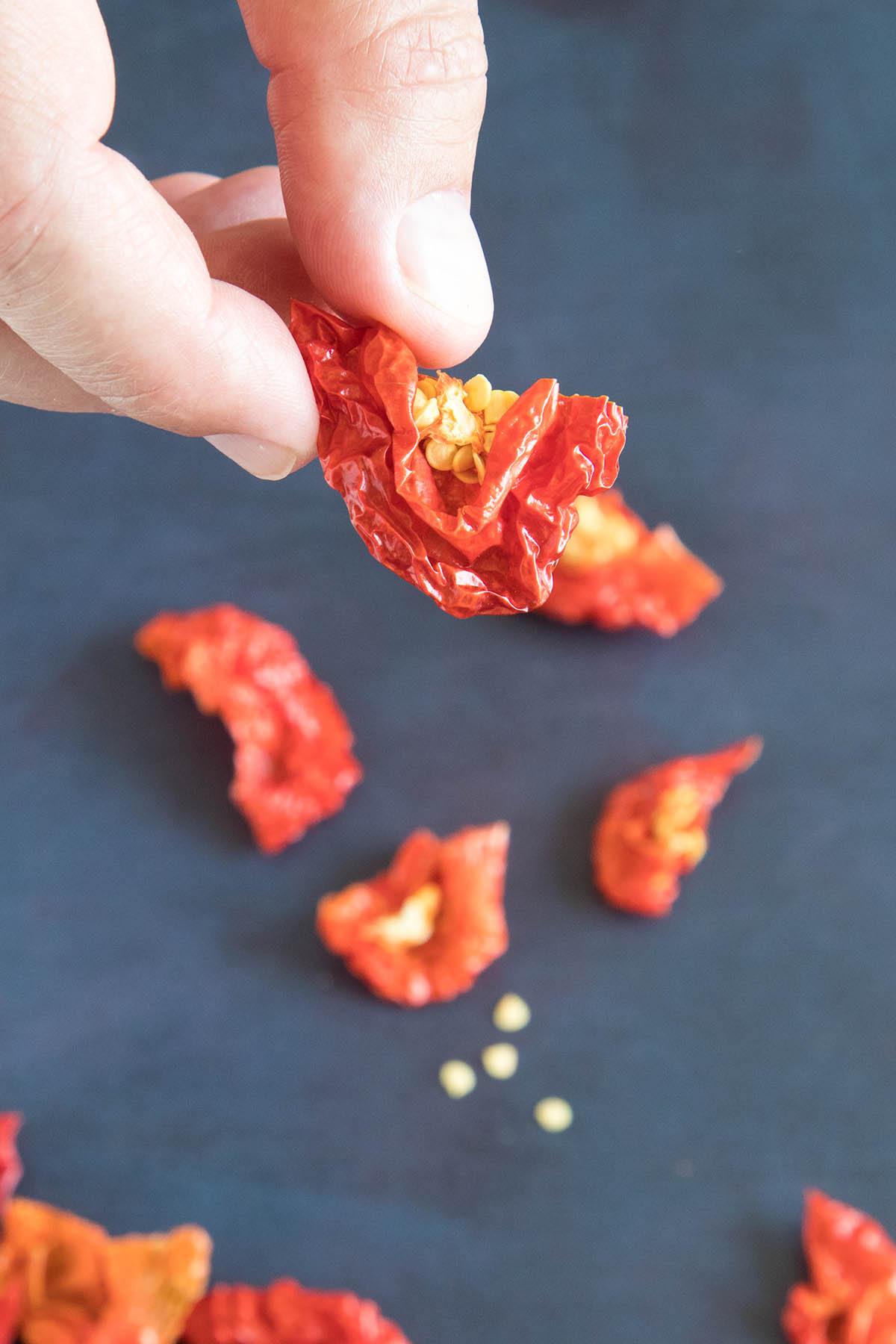
When the peppers are completely dried through and brittle, place them in a plastic baggie and seal. Crush them with your hands, or with a towel if your skin is sensitive, as some of the powder may leak through.
Like so...
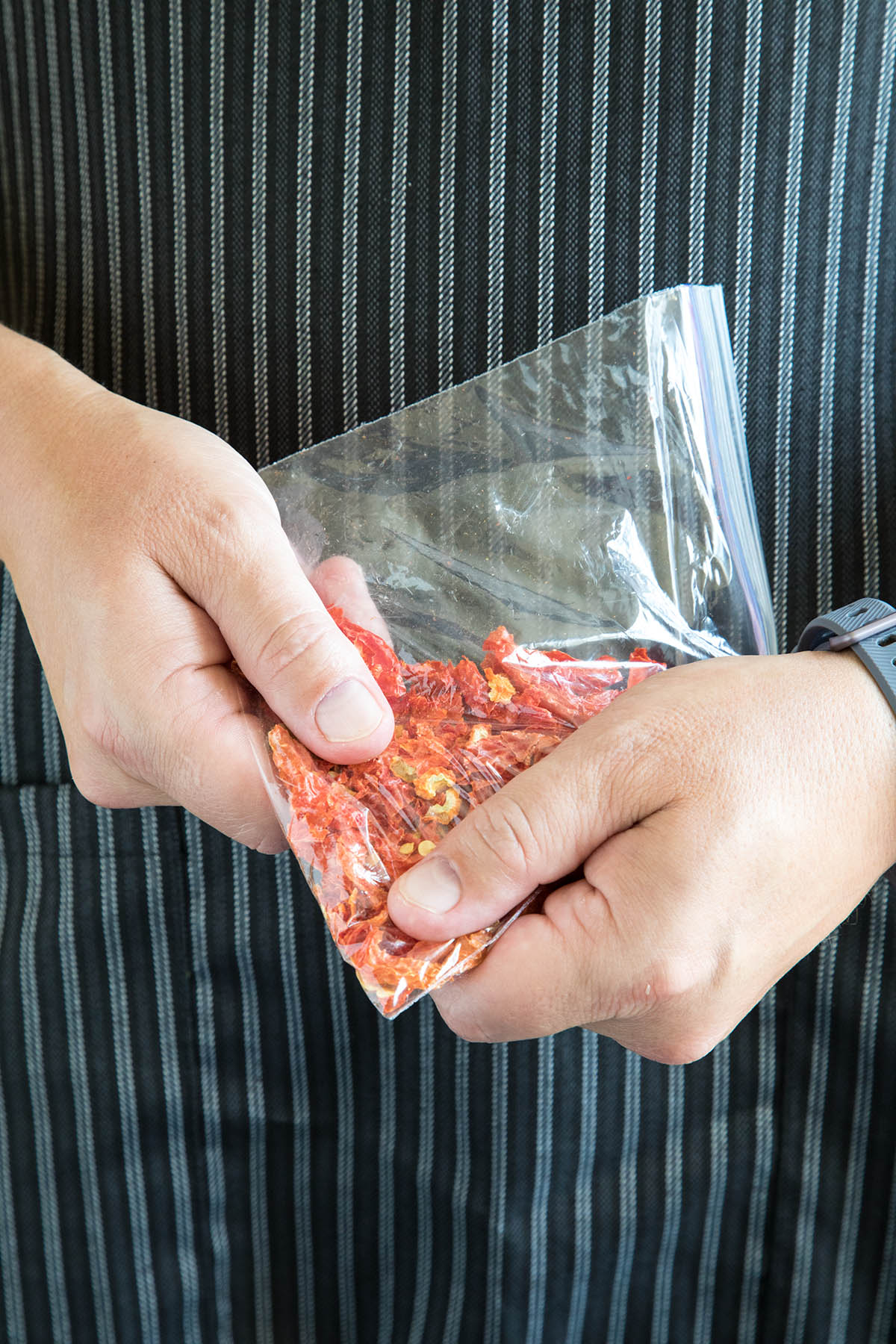
Finally, pour the crushed peppers/chili flakes into a shaker and use as needed.
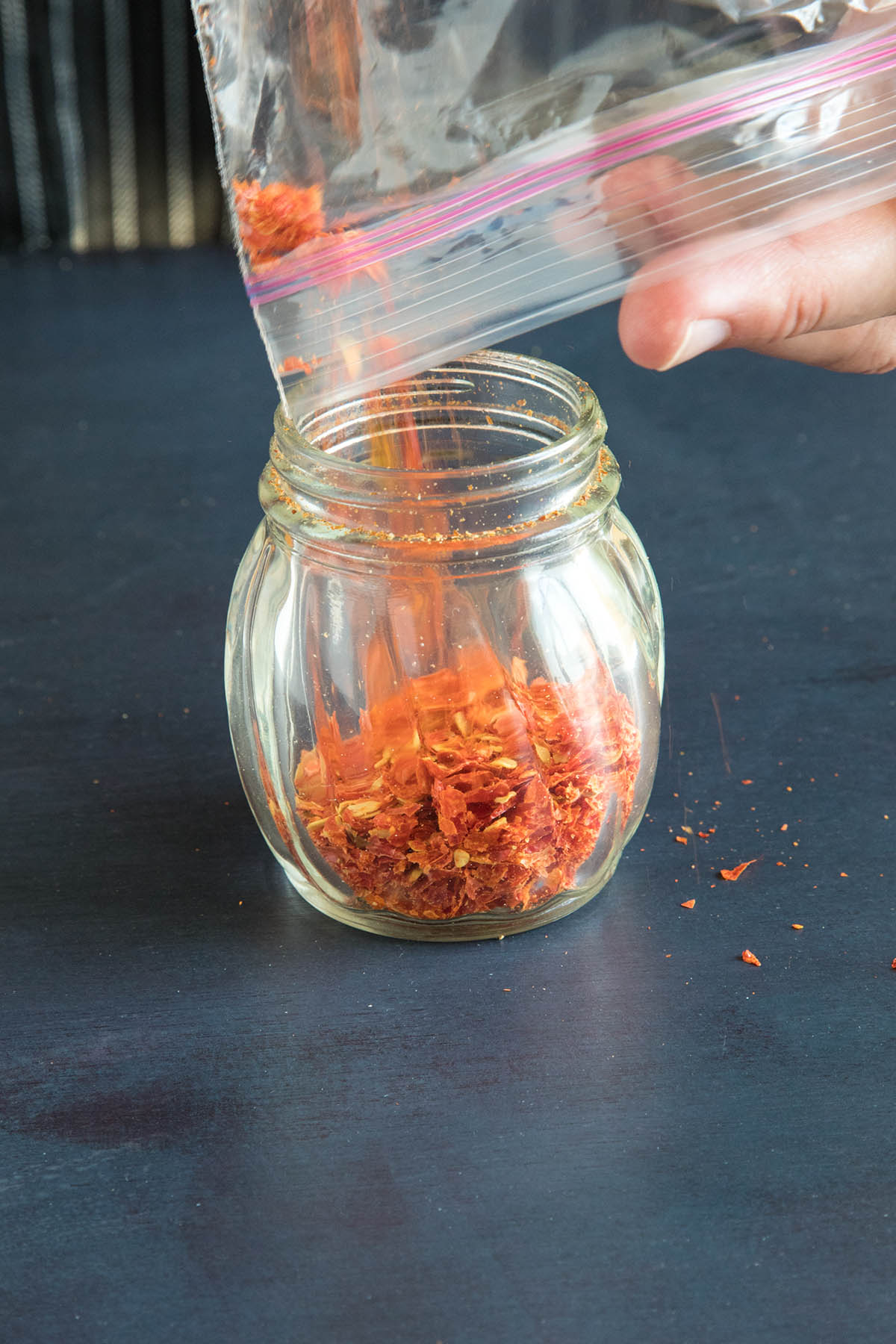
You can also use a spice grinder or food processor to make more of a chili powder to make your own spice blends.
Making Chili Flakes - a Great Preserving Method
It really is a great way to preserve a large chili pepper harvest. I have crushed chili flakes all over the house, at our breakfast table, at the bar in our basement, tucked away in drawers. You never know when you're going to need them.
Actually, you DO know when you're going to need them. When you're eating!
I hope you enjoy your homemade chili flakes!
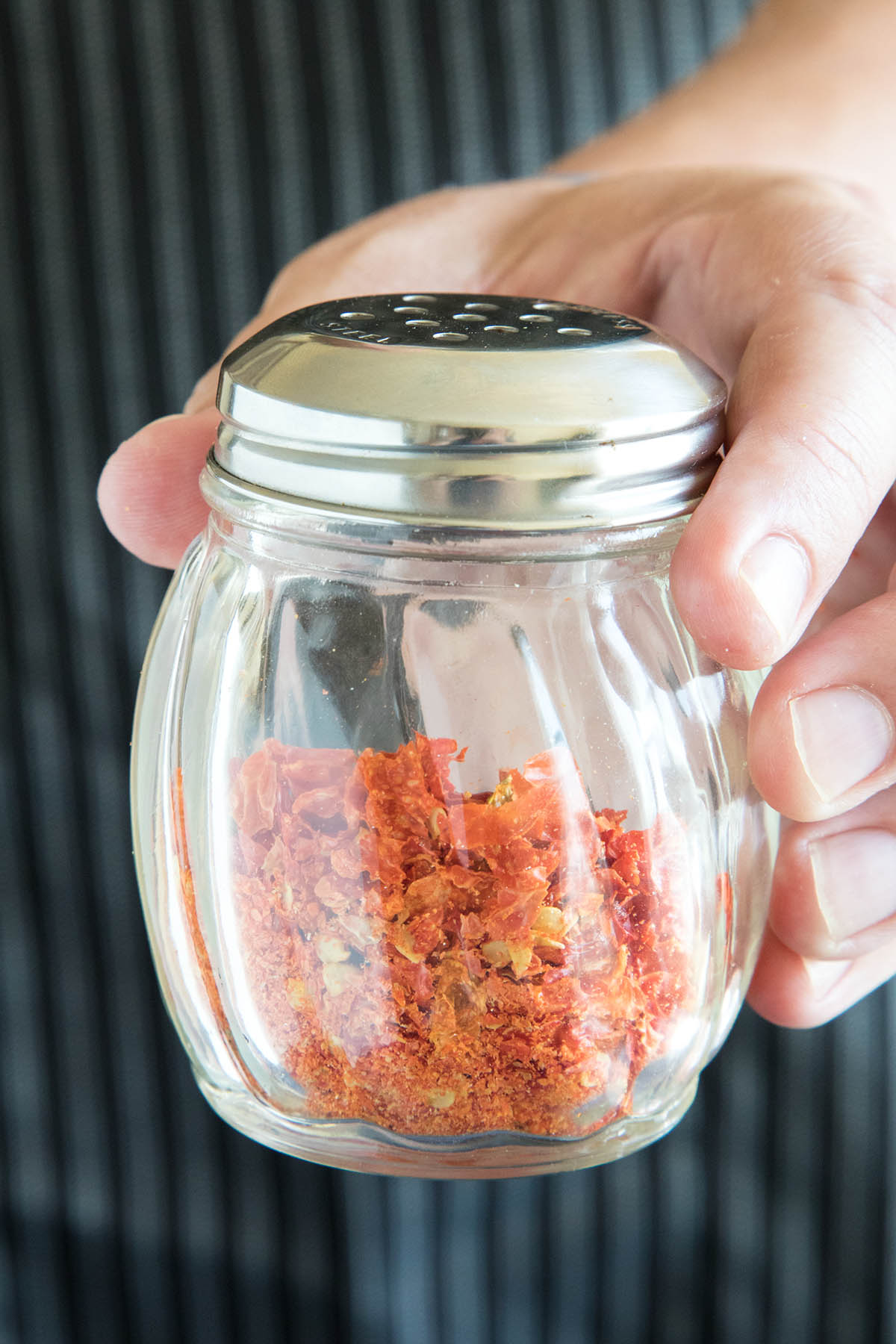
Safety Advice
When working with hotter peppers, including superhots, it is important to wear gloves when handling the peppers both in raw and dried forms. The oils can get on your skin and cause burning sensations. See above.
Need help? How to Stop the Chili Pepper Burn On Your Skin.
Also, the fumes from the chili peppers and/or the fine powders may get into the air if you are not working in a well ventilated room, so you may want to wear a mask and goggles. Superhot chili peppers, truly, are called superhots for a reason.
Check Out Some of My Other Homemade Seasoning Blends
If you enjoy this recipe, I hope you'll leave a comment with some STARS. Also, please share it on social media. Don't forget to tag us at #ChiliPepperMadness. I'll be sure to share! Thanks! -- Mike H.
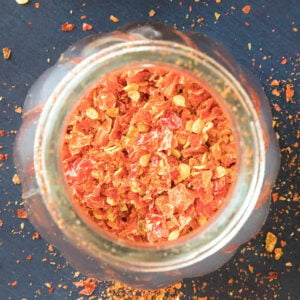
How to Make Homemade Chili Flakes - Recipe
Ingredients
- 8 ounces chili peppers of choice
Instructions
- Clean and dry your chili peppers.
- Slice each in half lengthwise for smaller peppers, or into rings for thicker walled peppers.
- Set them into your dehydrator tray and dehydrate at 130 degrees F for 12 hours, or overnight. You may need to dehydrate longer, depending on the air conditions.
- When the peppers are completely dried through and brittle, place them in a plastic baggie and seal. Crush them with your hands, or with a towel if your skin is sensitive, as some of the powder may leak through.
- Pour into a shaker and use as needed.
- The crushed chili flakes will last indefinitely, though they will lose color and potency over time. They’re best used within a year.
Notes
Nutrition Information
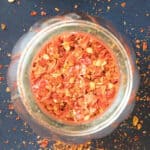
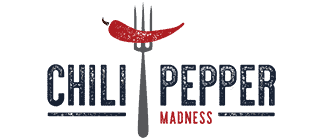

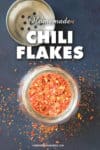
Mike says
I know how to dehydrate peppers, no problem. But when I grind them, in a coffee grinder, sometimes they come out smaller than I want. Do you have any tricks to make the flakes come out at the desired size?
Mike Hultquist says
Mike, I usually just crush them by hand for that exact reason. I place the whole dried pods in a baggie and hand crush. You can also use a large mortar and pestle or molcajete. Let me know if this helps.
Jeannie says
I had been wondering and researching what variety of chili peppers are used in the standard crushed chili flakes available at the grocery store and in pizza shops for close to a year. Thank you so much for answering that.
In the meanwhile I was out of hot sauce and made a batch with all the homegrown dried chili peppers I had on hand based on your recipe and info about using dried chili to make sauce. Thanks for all the awesome info and recipes on your site!
Mike Hultquist says
Thanks so much, Jeanne! Glad to be helpful!
Rhonda Kent says
I will definitely be trying this. We have a large garden and grow many peppers including jalapenos, serrano, Anaheim, and will be trying Brazillian Starfish peppers this next year. I will let you know how it turns out. Love your blog, by the way.
Mike H. says
Thank you so much, Rhonda! Please do - I am keen to hear how it goes!